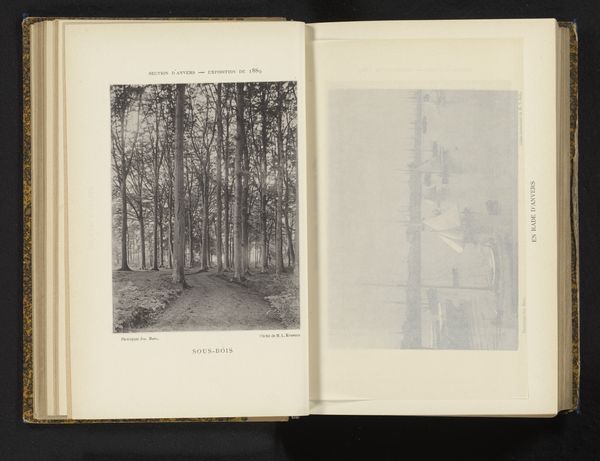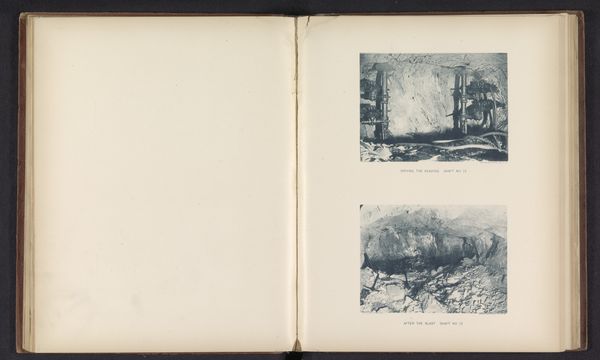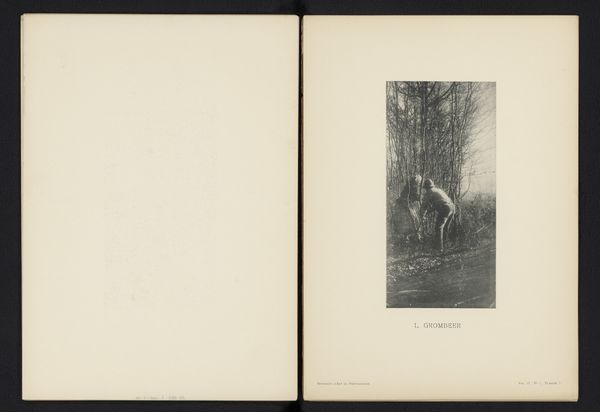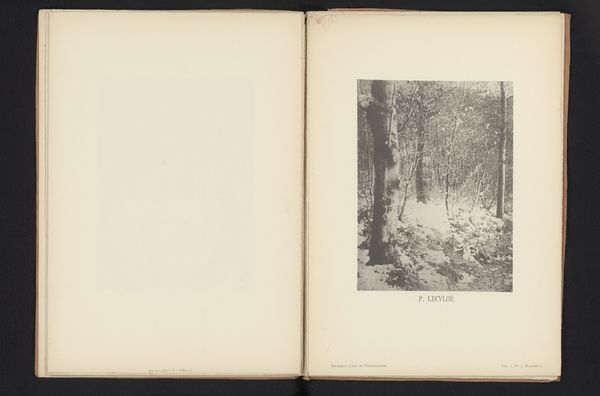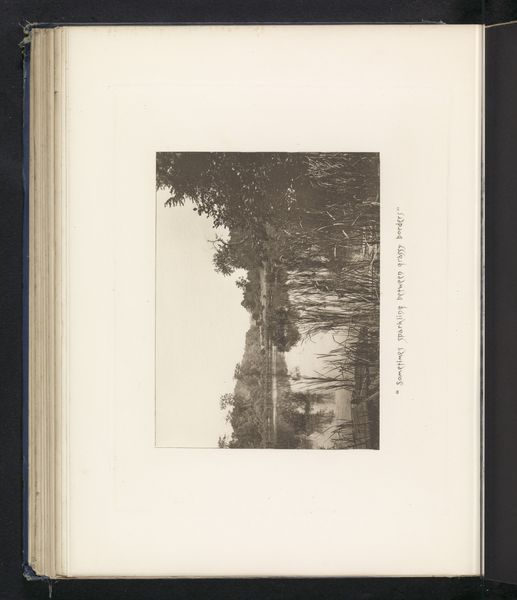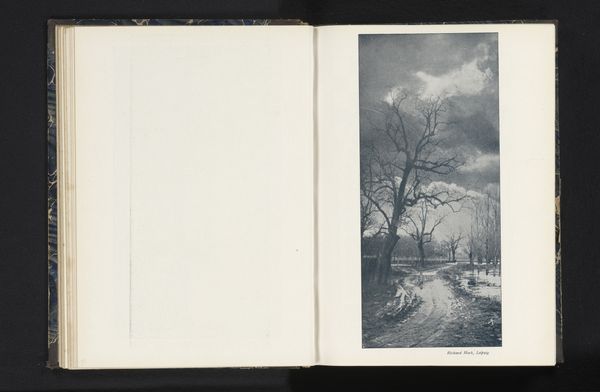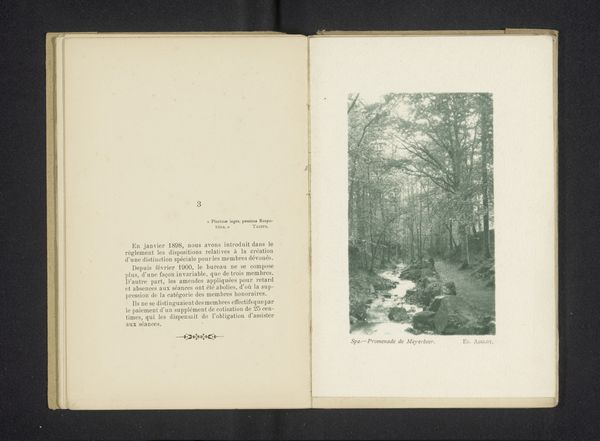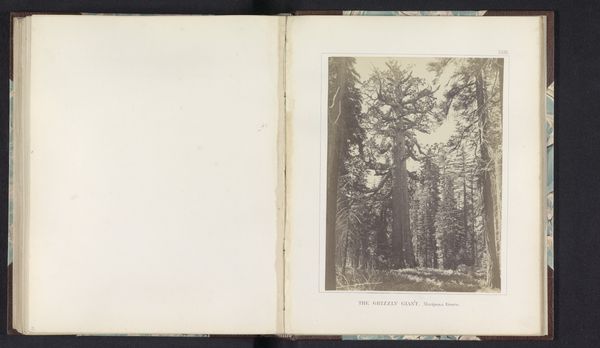
Dimensions: height 219 mm, width 163 mm
Copyright: Rijks Museum: Open Domain
Editor: So, this is “Landschap met bomen,” or “Landscape with Trees,” a gelatin silver print made before 1901 by Gustave Marissiaux. It's beautiful but also somber, I think. There's a kind of starkness to the trees, and the light is so muted. How do you interpret this work? Curator: It's interesting you pick up on the somber quality. I think situating this image within the context of late 19th-century European photography is key. Photography at this time was grappling with its place as both art and documentation. Consider how industrialization rapidly altered landscapes – did Marissiaux see photography as a way to memorialize a vanishing natural world, one increasingly under threat? The lack of vibrant colors adds to that feel, doesn’t it? Editor: Yes, it does. The absence of color definitely reinforces that feeling of something fading away. It makes me wonder about his intentions. Curator: Precisely! Was he consciously reacting against industrial expansion? Or was he perhaps reflecting on a broader sense of social or environmental anxieties? This photograph exists within a specific social framework, so exploring the photographic societies and artistic circles of the time might give us further insights. Who had access to these images, and what impact did they have? What did they represent at the time and to whom? Editor: That’s a fascinating perspective. I was initially just reacting to the aesthetic qualities of the image, but thinking about it as a kind of social commentary adds so much more depth. Curator: Exactly. Consider how landscape art has historically been used to convey power dynamics and control over nature. Marissiaux might be subverting those expectations. Understanding the interplay between artistic expression, social context, and technological advancements provides a richer and far more thought-provoking interpretation. Editor: I’ll definitely remember that when I look at other art! It makes me want to do more research. Curator: Excellent. The point is that a critical lens helps reveal the layers of meaning embedded within even the seemingly simplest of images.
Comments
No comments
Be the first to comment and join the conversation on the ultimate creative platform.
